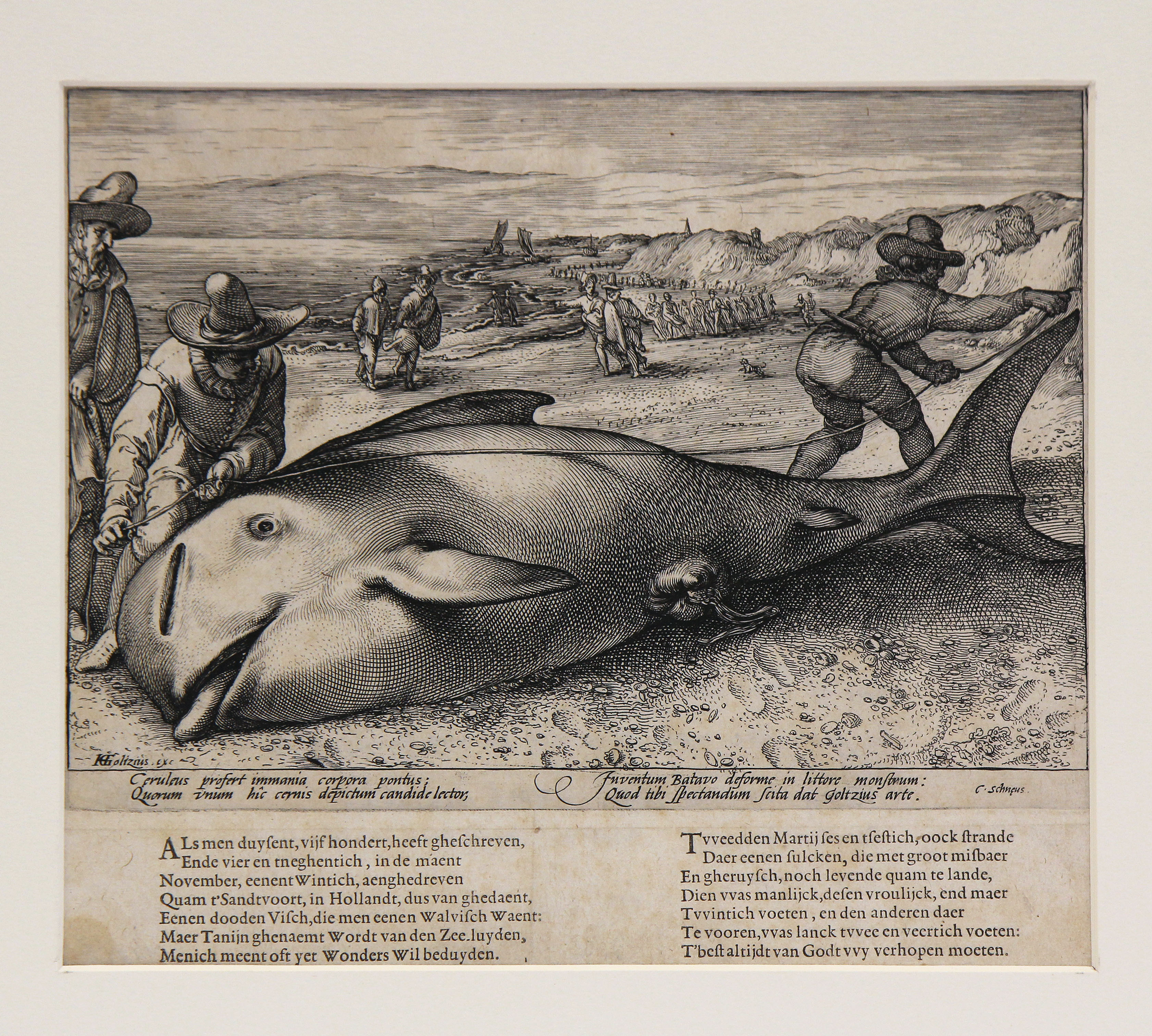Exploration : The Stranded Whale On the Beach at Zandvoort

The Stranded Whale On the Beach at Zandvoort, The School of Goltzius, 1594, engraving on paper, Dutch
Whales and other marine life in art, especially in the early stages of the whaling industry are quite understudied. Prior to the extreme popularity of whaling, these creatures were regarded as monolithic and biblical monsters, respected for their immense size and strength and observed in fear not only from the animal, but from what it could mean for the people. Stranded whales served as a huge event for the contemporary public and most wanted to place deeper meaning on these rare occurrences. This meant that people would cite the beaching of a whale as an omen of impending disaster, especially for military endeavors. Due to the lack of knowledge on such exotic marine life, people did not have the resources to understand what they were observing and this sparked interest in zoological studies. In fact, before whales were seen as commodities for products such as oil, they simply served as markers of the unknown, whether symbolically as omens or literally as animals to be studied.
This particular engraving by pupils of Hendrik Goltzius shows how accurate and detailed both the image and the textual description of the whale stranding were. This is quite literally a scientific record that can be used even by scientists today to assess the historical ranges and populations of whale species in the North Sea. Contemporary individuals of the Dutch Republic were highly interested in documenting these kinds of natural occurrences for the use of future generations. Although most viewed whales as the bearers of bad tidings, they were still intrigued enough to begin exploring into the oceans surrounding them.
